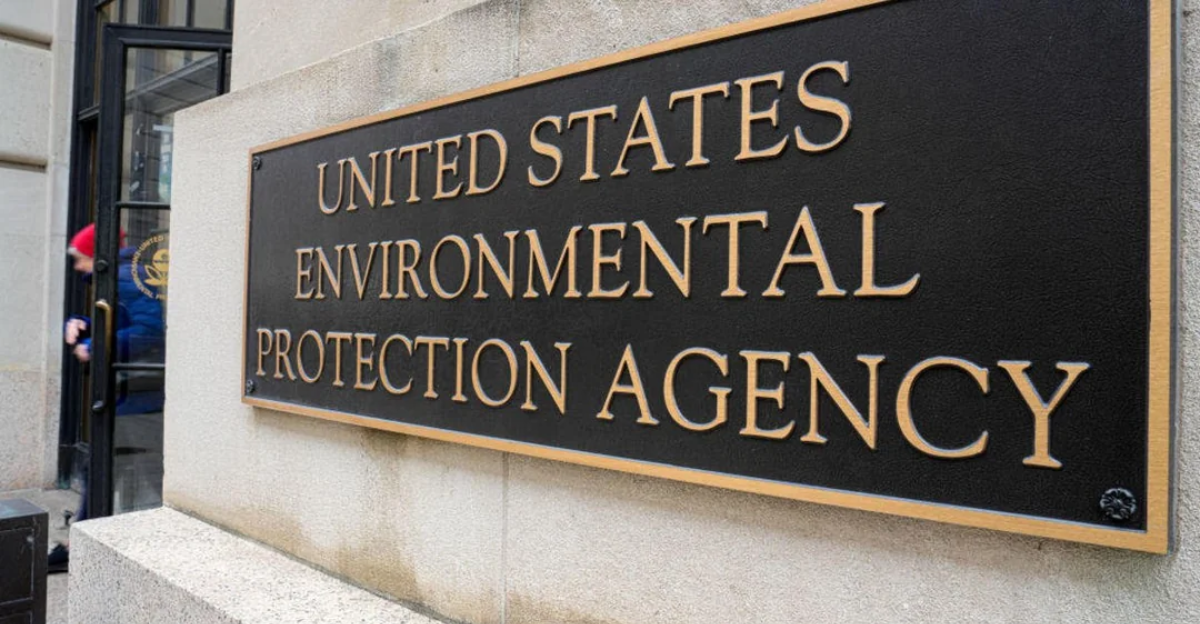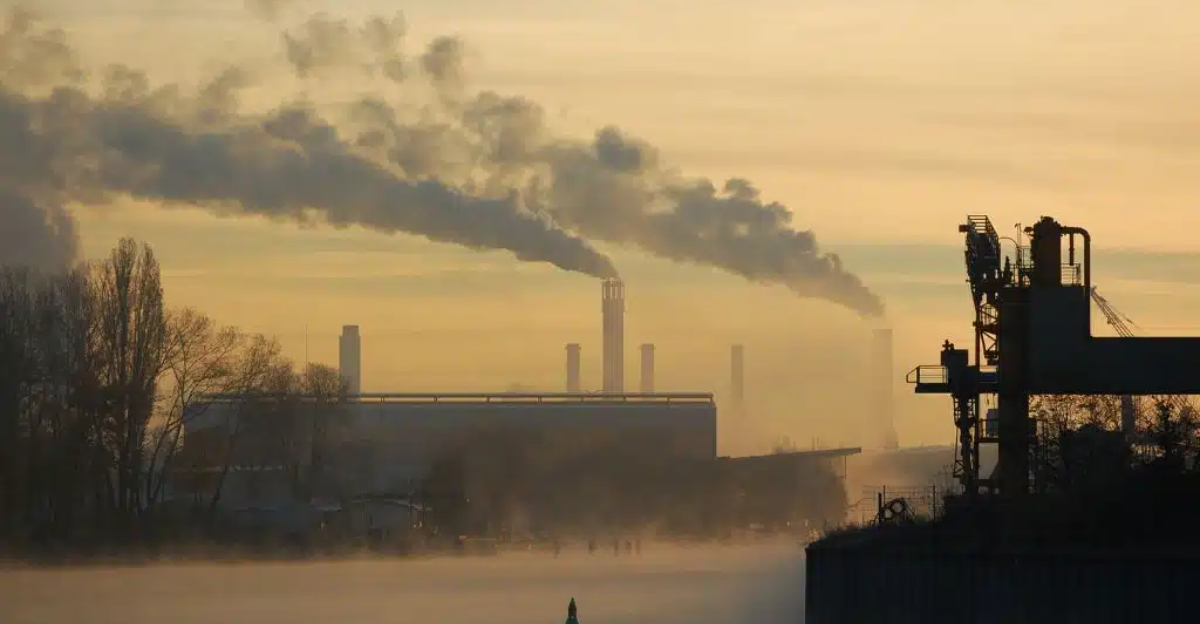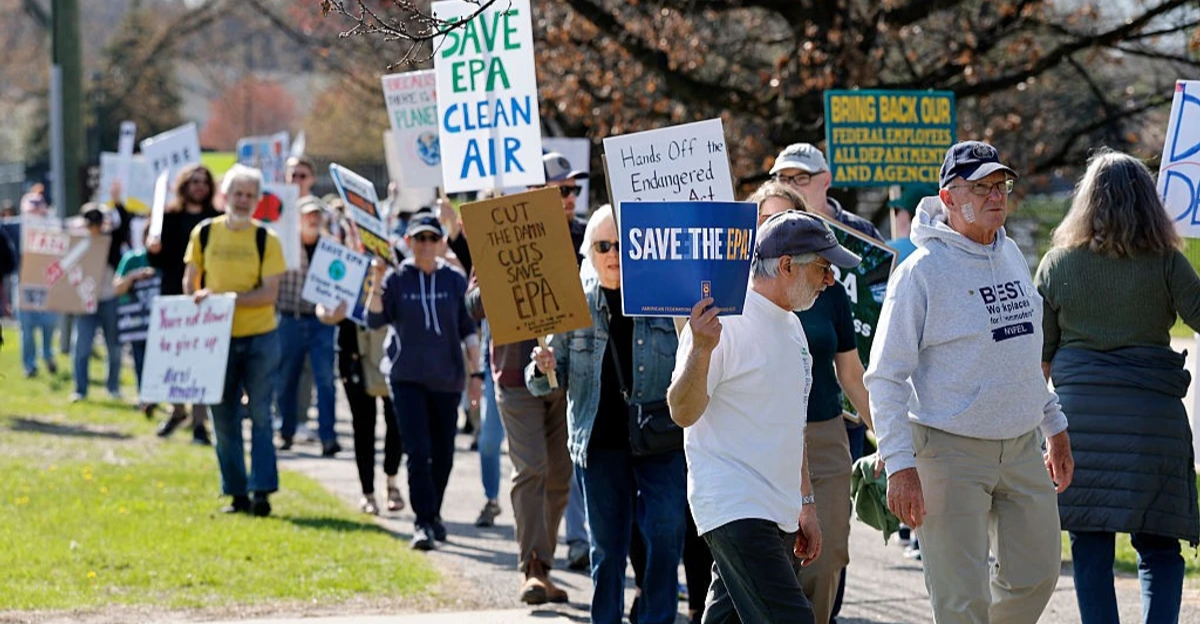
Rumors of the EPA abandoning its climate mission are no exaggeration. During a Friday town hall meeting with employees, the agency announced a seismic restructuring—eliminating core climate offices and slashing critical environmental programs.
Administrator Lee Zeldin claims it’s about “efficiency” and cost-cutting, promising $300 million in annual savings. But many warn this is the most decisive rollback of climate efforts since 2009. The shift could dismantle decades of work tied to greenhouse gas regulation—leaving scientists, lawmakers, and global observers asking: What now?
Which Climate Offices Are Eliminated?

The Office of Atmospheric Protection and the Office of Air Quality Planning and Standards—two pillars of the EPA’s climate oversight—are being dissolved. In their place, the agency will create new offices focused only on conventional air pollutants.
Staff learned the news at a Friday town hall, where they were also told the Office of Research and Development, which employs over 1,500 scientists, is being dismantled. One longtime EPA official didn’t mince words: “This is the most significant day of deregulation our country has experienced.”
Who’s Still Tracking Carbon? Apparently, Fewer Than Ever

The EPA’s Greenhouse Gas Reporting Program—once a cornerstone of emissions transparency—is being sharply curtailed. Since 2010, it has tracked emissions from 8,000 facilities. Now, that number will drop to around 2,300, limited mostly to the oil and gas sector. Critics warn this could cripple future climate policy.
“This would reduce the detail and accuracy of U.S. reporting… when most countries are trying to improve their reporting,” said Michael Gillenwater of the Greenhouse Gas Management Institute. Without good data, meaningful regulation becomes nearly impossible.
The Endangerment Finding—EPA’s Legal Backbone Under Threat

In a direct challenge to the foundation of modern climate regulation, the EPA is now reconsidering the 2009 Endangerment Finding. This landmark decision empowered the agency to treat greenhouse gases as threats to public health. But Zeldin says the agency must rebalance priorities:
“The Trump Administration will not sacrifice national prosperity, energy security, and the freedom of our people for an agenda that throttles our industries.” Undoing the Endangerment Finding would sever EPA’s legal obligation to regulate carbon emissions under the Clean Air Act.
Deep Budget Cuts Target Science and Climate Justice

The 2026 federal budget calls for a 55% cut to the EPA—especially targeting climate-related research and environmental justice programs. The Office of Research and Development will lose $235 million, gutting its ability to conduct mandated science.
Grants for NOAA’s climate research also face a $1.3 billion reduction. These cuts “would be catastrophic,” warned one scientific advisor, potentially erasing the U.S.’s leadership in environmental science at a time of rising global stakes.
Energy Star—A Trusted Program, Now on the Chopping Block

After 30 years of helping Americans identify energy-efficient products, the Energy Star program is being phased out. Staff learned of its fate during a closed-door meeting where officials confirmed all non-mandated climate programs are being deprioritized.
Energy Star has saved consumers roughly $500 billion in energy costs, according to Senator Ed Markey, who called its cancellation “a blow to American families and businesses everywhere.” Its distinctive blue label may soon disappear from store shelves.
Research Under Fire—The EPA’s Scientific Core is Being Dismantled

The Office of Research and Development, long considered the scientific engine of the EPA, is being hollowed out. As many as 75% of its 1,155 scientists could face layoffs. The office supports policies on everything from “forever chemicals” to air pollution.
Without it, critics argue, the EPA can’t legally claim its rules are based on the best available science. “This cannot occur if the agency’s scientific foundation is dismantled,” warned Rep. Zoe Lofgren.
Project 2025: A Conservative Blueprint Comes to Life

The EPA’s transformation closely mirrors the recommendations in Project 2025, a conservative policy roadmap guiding Trump’s second term. The plan calls for rolling back greenhouse gas regulation and reshaping the agency to focus on traditional air pollutants.
One of its authors, Aaron Szabo—now head of the air office—accuses former EPA staff of acting as “embedded activists.” The restructuring aligns perfectly with Project 2025’s vision: sidelining climate regulation in favor of state-led pollution control.
Public Pushback Mounts as Layoffs Hit Vulnerable Divisions

The backlash is growing. Over 180 Democrats in Congress have condemned the changes, calling them dangerous and shortsighted. Environmental justice programs were among the first targeted—staff were informed their jobs would be cut by July 31.
Chitra Kumar, a former EPA official, called the layoffs “hypocritical,” noting that many of the affected employees were “working to reduce pollution and toxins in the communities suffering the most harm.” The political fight is just beginning.
What’s at Stake: America’s Role in the Climate Fight

This isn’t just another reshuffling of federal priorities—it’s the most sweeping rollback of climate infrastructure in U.S. history. By gutting programs, staff, and legal authority, the EPA is pivoting away from decades of bipartisan environmental progress.
Whether these changes endure depends on court battles, elections, and public pressure. But one thing is clear: America is no longer leading on climate. The question now is how far—and how fast—this retreat will ripple across the globe.
Explore more of our trending stories and hit Follow to keep them coming to your feed!

Don’t miss out on more stories like this! Hit the Follow button at the top of this article to stay updated with the latest news. Share your thoughts in the comments—we’d love to hear from you!







